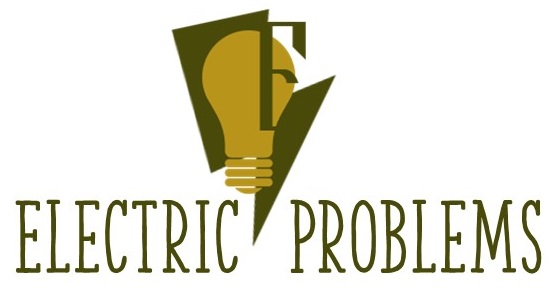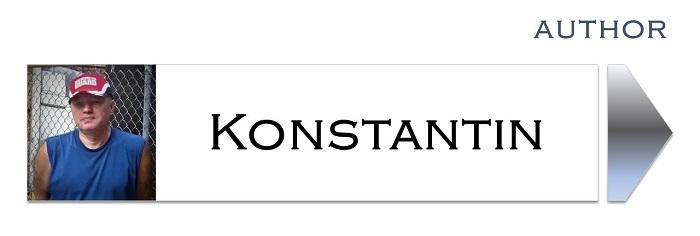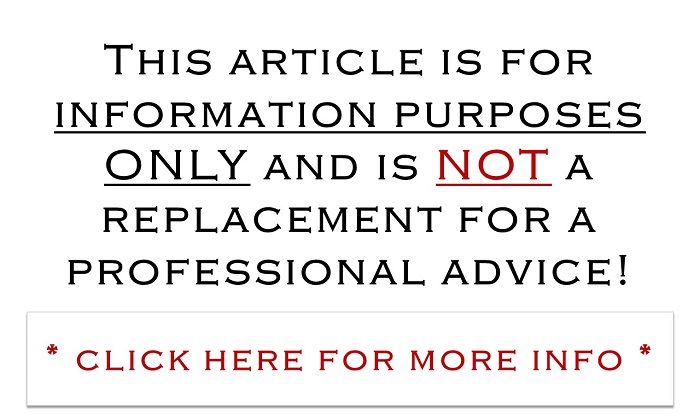Industrial Power Supply [Specifications and Glossary]
DISCLAIMER: AS AN AMAZON ASSOCIATE I EARN FROM QUALIFYING PURCHASES. THIS POST CONTAINS AFFILIATE LINKS THAT WILL REWARD ME MONETARILY OR OTHERWISE WHEN YOU USE THEM TO MAKE QUALIFYING PURCHASES. FOR MORE INFORMATION, PLEASE READ MY EARNINGS DISCLAIMER.
The industrial power supply sector is very demanding due to new technologies arising and ever-changing regulations that we all have to deal with. There are many types of industrial power solutions to choose from and I hope that this guide will help you navigate through different options and sometimes not so easy to understand the terminology.
One important thing to mention is that industrial equipment is very often used in harsh conditions, where many things can go wrong. Dust, dirt, and other unsanitary factors of the working environment could be just as “unhealthy” to your equipment as they would to you, as a person.
Equipment designed for industrial use is called “industrial-grade” or “rugged” and it’s required to operate properly regardless of the weather, humidity, and exposure to toxic or flammable elements. This is defined by Ingress Protection (or IP) ratings.
Don’t forget, that you will need to calculate your actual power requirements BEFORE you start acquiring and connecting your equipment. Just look at the wattage needed for every connected device and add it up (if your power supply company doesn’t provide you with that information, use the formula below to calculate from whatever they give you).
That means if you have some items that will be connected to each other, they will need a certain amount of power as well and if you connect too many devices without actually thinking this through, you may end up with not enough power.It is recommended that you should always try selecting the equipment that will give you 25% more power than currently needed. Why? You want to expand, don’t you?
Needed power is calculated in Watts and the formula is:
Amps * Volts = Watts
Here is an example:
| Power | Current | Voltage |
| 24 Watts | 1 Amp | 24 Volts |
| 48 Watts | 2 Amps | 24 Volts |
| 72 Watts | 3 Amps | 24 Volts |
| 96 Watts | 4 Amps | 24 Volts |
** Very important! Make sure your power system is compatible with whatever you are connecting. If you will supply more Volt and Amps than it can handle, your equipment, if not protected, may just burn out.
Industrial power supply systems
Now let’s talk about different power supply systems and what kind of features they offer. In reality, I find it kind of amazing that we, humans, managed to “tame” such a powerful force as electricity with simple and not so simple devices. Hats off to humankind!
Today we are dealing with more complicated power-protection strategies than ever due to the growing data center and telecommunications sector. These areas require many components to be taken into consideration and it is where even the smallest power problem could do catastrophic damage to the service that companies provide.
In the industrial automation sector, any power glitch can end up producing waste and turn into a costly repair procedure. If the power problem completely shuts down operations, a significant loss in terms of money and client base can incur. For this reason, no power system is complete without a reliable backup solution.
The following industrial power solutions are available on the market today and they include, but not limited to:
- AC to DC conversion
- DC to DC conversion
- AC to AC conversion
- DC to AC conversion
- Power backup (UPS)
There are also industry-specific power solutions, like a utility, telecom, servers, etc. After going through a bunch of websites of different manufacturers, we noticed that there is no single standard on how similar systems are labeled and described.
This is why I broke them down into these 5 main categories. Now, let’s go over industrial power system types.
1. Industrial AC/DC power systems
There are three common sizes of industrial AC/DC power systems: wall mount – small, rack mount – medium, cabinet – large.
The main components of a DC Power System generally include:
- Rectifier, which is a device that converts AC – alternating current into DC – direct current.
- Controller – does exactly what the name state and that is, it controls your system by making logical analysis and giving commands for operation. It also provides insights for you on what is happening inside of the unit.
- Rechargeable batteries for smooth operation during downtime.
More complex variations could include a power plant and a remote communications module. They also come in (1) wall mount, (2) rackmount, (3) DIN rail, (4) cabinet configurations and could be:
- Linear Regulated
- Switching Regulated
- Unregulated (older versions)
- Programmable
- Redundant
Here is a list of some companies that offer DC power solutions:
- ABB
- Acopian
- Absopulse
- Advanced Energy
- EFORE
- Keithley
- KEYSIGHT
- MTM Power
- NewMar
- SALICRU
- Vertiv
- Unipower
2. Industrial DC/DC power systems
This system (or an electronic circuit) changes the voltage level of the DC source. Basically, it’s a converter of electric power that accepts DC input and outputs DC as well. In order to power your electronic equipment safely, you will need to match a specific voltage amount and this is how you get the exact output voltages needed.
| Type of System | Manufacturer | |
| 1. | DC/DC converter | Absopulse, Acopian |
3. Industrial AC/AC power systems
This type of system is called a transformer. It will adjust your incoming AC voltage into an appropriate AC voltage for your electrical device.
| Type of System | Manufacturer | |
| 1. | AC/AC transformers | Absopulse |
4. Industrial DC/AC power systems
This type of system is called an inverter. It transforms DC (Direct Current) power into AC (Alternating Current) power. Commonly used to take electricity from batteries and fuel cells.
| Type of System | Manufacturer | |
| 1. | DC/AC inverters | Unipower, Absopulse |
** Quick Note. The lists of manufacturers are intended to be as accurate as possible, but there is still a possibility of mistakes. If in doubt, please contact the manufacturer for more information.
5. UPS power backup
UPS (or Uninterruptible Power System) is a type of backup battery system that usually works alongside a standard power supply. It is designed to support your load for some time during power outages.
It provides almost instant backup power in comparison to standard power generators. During voltage surges, spikes, dips, and fluctuations your critical load needs to be protected as much as possible to avoid data loss and equipment damage.
This is a function of certain UPS systems, check the model for more information. There are three main types of UPS:
Offline
This unit functions in standby mode and will power your equipment as it detects power failure. Least expensive option.
Line-interactive
This is basically the same system as an offline (or standby) with the ability to regulate voltage by increasing it if it gets to be too low and decreasing it if power surges or spikes are detected. Even though offline and line-interactive systems are not always “on”, it takes only milliseconds to be activated when needed.
Online (VFI or double-conversion UPS)
This is a more expensive type of UPS. It uses a multitude of conversion systems to give you a clean uninterruptible output. Inverters will give you a constant flow of energy and all the spikes, under-voltage and surges will be eliminated along the way.
In case of a power blackout, online UPS will simply start powering your equipment from batteries. This is a 100% uninterruptible power backup system.
Important specifications of power supply systems
Power supplies have to be designed carefully in order to be safe for you, your equipment, and the environment. And it’s not easy at all! With this, I would like to thank all the professionals that managed to accomplish this task.
Here are some common specifications that you will have to deal with while choosing the right power supply system for your business:
Input voltage
This is how much power your unit can safely take in and transform and it is rated in VAC (which stands for Volts of Alternating Current). The standard voltage in the USA is 120 volts (European/Asian electrical system support 220 volts).
Input frequency
The wider the range, the better. Frequency is measured in Hz (which stands for Hertz) and measures the number of electric cycles occurring per second. The typical frequency in the United States is 60 Hz and in Europe/Asia – 50 Hz.
If you are getting your equipment from a global retailer, it’s a good idea to check if this rating is compatible with your current location.
Power or maximum input current (or amperage)
This is the current that is coming from the maximum DC load. It is calculated by the equation: P = I V (Power = Current x Voltage). For example, a circuit breaker that gives you 8A (or Ampere) under standard 120VAC (USA) will give 960W (Watts) 960W = 8A x 120V to use for your equipment.
If you plug in more units than this circuit can handle, the power will go off.
Inrush Current
What is inrush current? Inrush current (also called switch-on surge) is an instantaneous current that occurs when an electrical device turns on.
It is usually much higher than the normal steady current. Some power supplies offer a soft start function or low inrush current.
Efficiency
Power supply systems are not “all created equal” and this ratio specifies the percentage of power that is lost during the conversion process. Efficiency is calculated by dividing the output power by the input power.
The higher the efficiency %, the less the power loss. The power that was not used turns into heat and you can check that physically by touching your unit while it is in a working state.
Some newer power supplies use roman numerals like I, II, III, IV, V for their efficiency rating (according to international code standard), with “V” being the best rating. Always keep in mind that you have to subtract the power loss % from the amount of power that the unit can provide you with to get a real picture.
Line regulation
As AC input voltage changes, DC output reacts to it and the power supply unit is supposed to maintain stable voltage regardless of this change. This specification states % of the change in voltage.
Load regulation
This specification refers to the ability of a power supply to remain stable during DC load changes and it measures the amount of current change in relation to a drop in voltage (it is very often at 1% or better).
Ripple (or Surge)
Quality power supplies will have very little ripples. The amount of ripples commonly increases when the load output is at maximum and voltage input is at a minimum.
It is a power that is being wasted with side effects like overheating and noise. Ripples occur during AC to DC conversion and can be eliminated by filters and regulators that are usually included in your power supply.
RF (Radio Frequency) Immunity
The higher the number, the better the immunity to electromagnetic waves (or radiofrequency) with IEC + number being the test specification.
RF (Radio Frequency) Emissions
This emission radiation standard is designed to have a better workplace for all of us! Personally, I am really happy that it is being measured and regulated.
This is the excess energy that is being transferred by radio waves into the air from our power supply which might have a significant effect on our health and well-being. It is also important for RF signals not to interfere with other equipment and this is one of the main reasons this standard was created.
See below for more information on certifications.
Overcurrent and overvoltage protection
It is very common for power supplies to offer some kind of short circuit protection in case of overcurrent, but switchers provide better protection in overvoltage than linear power supplies. In either case, your power supply must have the ability to block excessive voltages that could damage your equipment.
Operation Temperature
This is a rather important measurement, especially if multiple power units are required for operation (telecom, data center, etc.). It is a temperature range at which the power supply is designed to operate at full load.
Interesting details were mentioned by Google engineers about their data center ambient temperature:
Google runs their data centers warmer than the most (at about 80 degrees Farenheit), because it helps with the efficiency.
Here is a video clip about how they do it:
![]()
As a side note, they use an evaporative cooling system that has been custom-designed for their needs.
Glossary of terms
- AC or Alternating Current. This is the power that is coming from your plant or power supply company that you will need to convert to DC in order to make some of your equipment work. AC to AC converters is also available if you need a different AC voltage.
- DC or Direct Current. This is the power that will be supplied to your device or equipment from the power supply AC/DC or DC/DC unit. Check your equipment requirements.
- Converter (DC/DC). This electric circuit converts DC (Direct Current) from one voltage to another.
- Transformer (AC/AC). This is an electric device that is used to increase or decrease AC (Alternating Current) voltage.
- Inverter (DC/AC). This power device changes DC current (possibly coming from batteries) into AC current.
- Nominal voltage. This is the standard at which equipment operates.
- Rated voltage. This is the maximum voltage at which your equipment can operate safely. It is usually higher than the nominal voltage.
- Output voltage. Here is an example of setting the output voltage:
U1, U2, and U3
You probably noticed that many power systems are rated with U and number (1,2,3). But what does it mean? This simply means the height of your power supply rack-mounted system with the width being 19 in or 23 in wide. You can use the table below for reference:
|
Height |
Inches |
Centimeters |
|
| 1U | 1 x 1.75 in | 1.75 in | 4.44 cm |
| 2U | 2 x 1.75 in | 3.5 in | 8.89 cm |
| 3U | 3 x 1.75 in | 5.25 in | 13.33 cm |
Single and three-phase systems
The main difference between single-phase and three-phase systems is the amount of current they are able to transfer. A Single-phase power supply can provide up to 230V and a three-phase power supply – up to 415V.
The three-phase power supply can provide more power than the single-phase and it is highly efficient due to minimum power loss. The only downside is more wires (three instead of one).
Here is a detailed explanation of how this system works:
Redundant Power Supply (RPS)
This system is designed to have at least two power supply units that serve your load one at a time. In case one of them fails, you will still be able to get a consistent power supply for your production process or facility from another unit. This is a high-reliability unit that should be considered if any type of power loss would equal a disaster for you.
ASi (Actuator Sensor Interface)
Also called AS-interface, is a simple method of connecting the I/O (input/output) devices via an intelligent cabling system. It’s a new technology that allows wires to be so discrete, that it becomes extremely appealing as a new trend in the networking and automation industries.
Safety certifications and compliance
There are many ways to make sure you are getting the best product, and that is certifications. This how you can make sure that your power supply has been tested by an independent company for quality and safety.
On the safety side, UL certification is something to look for, and here is an article about it (What is a UL certification?). UL-listed products are generally considered to be of better quality.
There is also ElectroMagnetic Compatibility (or EMC) testing. “European Telecommunication Standard (ETS)” is a standard related to our environment.
ETS is an environmental certification standard that is controlled by the Technical Committee of the European Telecommunications Standards Institute (ETSI). It comes down to how your equipment affects climate conditions in the form of delivering excess heat or electrical pollution.
It also tests for the equipment’s ability to handle different climate conditions, like earthquakes, for example. Environmental Engineering (EE) offers environmental conditions and compliance tests.
Electromagnetic Compatibility (or EMC) test is needed to ensure that your device does not emit too much electromagnetic interference and has good immunity to electromagnetic discharge (EDS). These emissions are also called RF (Radio Frequency), electromagnetic, or conducted.
EMC certification is mandatory and here is some information from the white paper: “Electromagnetic Compatibility Considerations for Switched-Mode Power Supplies”, by Don Li, Chief Technical Officer, and Jeff Schnabel, VP of Marketing, CUI. Inc.
This test is for conducted and radiated emissions and it is controlled in the USA by the Federal Communications Commission (FCC):
And internationally by International Electrotechnical Commission (IEC) and International Special Committee on Radio Interference (CISPR):

Click on the white button above to find your electrician!





